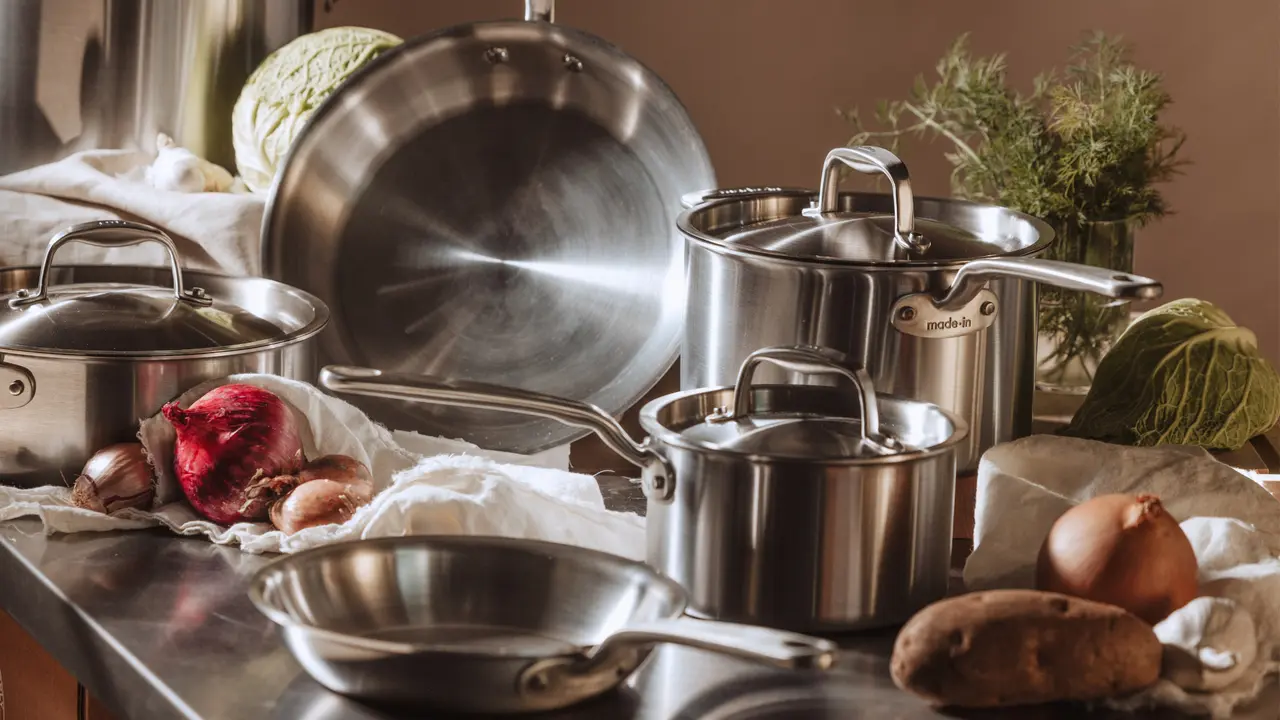Stone fruits are as diverse as they are delicious. The star of summer, many of their seasons begin in late May and hit their peak in July and August. You may think that you already know the different varieties of stone fruit, but we guarantee, there will be some surprises on this list. Follow along to learn more about the many kinds of stone fruit, how to find the best ones, and how to use them this season.
What Is Stone Fruit?
At its most basic, a stone refers to a fruit with a pit in the center. Examples include cherries, peaches, nectaries, plums, and apricots, along with various hybrids like pluots and apriums which have become popular in recent years. Stone fruits are associated with summer and many, excluding the tropical ones, reach their peak season in July or August.
The scientific name for these fruits is a drupe, and that classification makes them more complicated. Drupes can also be aggregate fruits, which are made up of individual drupes or druplets like a raspberry or blackberry. In these cases, the “seeds” function as individual pits surrounded by fruit. Some flowering plants also produce drupes, meaning that olives, mangoes, lychee, and palm fruits, like coconuts or dates are also stone fruits.
What are Clingstone and Freestone Fruits?
Among the non-aggregate fruits, there are two main types of stone fruit—clingstone and freestone. Clingstone fruits have a pit that is attached and therefore slightly more difficult to remove. They are also smaller and appear earlier in the season. Because they are sweeter, clingstones are preferred for jam and other canning projects.
Freestone fruits do not have an attached pit. Instead, when you slice open the fruit, the pit is easily removed without any extra cutting. Freestone fruits appear a little later in the season and are typically larger and juicer. Peaches, nectarines, plums, apricots, and even cherries come in both freestone and clingstone varieties.
How to Choose the Best Stone Fruit
If you purchase them during their peak season, it should be easy to find stone fruit that won’t need to ripen in your windowsill. When stone fruits are ripe, they give off a sweet aroma. To choose the best ones, look for fruits that are soft to the touch but not squishy. Wrinkles around the stem indicate sweetness, because it means that the water within the fruit is evaporating.
Avoid fruits with significant bruising, dents, or green or brown spots. When you’re choosing aggregates, watch out for mold. Blackberries and especially raspberries are delicate and prone to spoiling, sometimes even before they leave the store or market. Be careful when transporting stone fruits, as they can easily be damaged if left at the bottom of a bag. If at all possible, try to buy your fruit locally.
14 Stone Fruits to Know
Below, we’ve compiled a list of stone fruits you’re likely to encounter. Many will be familiar to you, but some you may be surprised to learn are stone fruits. We’ve also listed a few common uses, though, this is not an exhaustive list of all the things they can do.
1. PeachesPeaches are maybe the most well known stone fruit, coming in yellow and white varieties. They’re frequently found in desserts such as pie and cobbler, but can also be made into jam or chutney. Peak season peaches are also a great addition to a salad, paired with salty cheeses like goat cheese or ricotta.
2. PlumsPlums are found in all different jewel tones including red, yellow, and deep purple or black. Their tart skin and sweet flesh make them perfect for jam or layered into rustic, open-faced tarts. When dried, they’re called prunes.
3. ApricotsApricots have pale orange, fuzzy skins with bright orange flesh inside. They’re one of the more tart stone fruits, so they lend themselves to being dried, which amplifies their sweetness. Jam and scones are popular uses for this fruit.
4. CherriesCherries are some of the earliest stone fruits to appear in the late spring and early summer. They are often bright to deep red, but also come in the blush-colored rainier variation. Sour cherries are best made into jam and they’re also featured in a classic pie.
5. NectarinesNectarines are similar to peaches, but with smooth instead of fuzzy skin. They also come in yellow or white. It’s not uncommon to see nectarines in a more savory context, such as sliced in salads or paired with prosciutto on a crostini.
6. HybridsHybrid stone fruits include apriums, pluots, and plumcots. They’re specially bred and cultivated to combine various attributes of other stone fruits into one. Because of this, hybrids are great to eat out of hand but also do well in tarts or jam.
7. MangoesMangoes are a tropical fruit with a large pit and bright orange flesh. Like watermelon, mangoes pair well with salty and spicy flavors. They make a good addition to salsa, ceviche, or dipped in Tajin, as well as blended into drinks.
8. OlivesOlives, though you may never have thought of it, are actually fruits, with a characteristic pit in the center. Typically, they’re prepared in a savory fashion, such as in tapenade or folded into bread. Olives are also sometimes found in martinis.
9. RaspberriesRaspberries, despite the confusing suffix, are actually stone fruits. They’re an aggregate of drupelets and each “berry” contains a tiny, edible pit. Raspberries come in red, black, and pale yellow. They’re great for jam and pair well with both chocolate and citrus flavors.
10. BlackberriesBlackberries, like raspberries, are also aggregates. They’re typically larger and sweeter than raspberries, and also work well for jams and jellies. Use them in salads for a burst of almost floral flavor.
11. MulberriesMulberries are the smallest and sweetest of the drupelet “berries”. They grow on trees instead of thickets like blackberries or raspberries and come in red, white, and black varieties. Mulberries can be enjoyed fresh or dried in scones or quick breads.
12. LycheesLychees are a tropical tree grown predominantly in China, but they can also be found in Southeast Asia and South Africa. They have a rough reddish rind that must be removed before eating and white, fragrant flesh. Enjoy them poached or blended in drinks.
13. CoconutsCoconuts are another misnomer as they are not nuts but the interior of a pit. Young coconuts can be used for water or fruit, while mature ones must be cracked open. Coconut can be dried, shredded and used in baking or used for their creamy milk.
14. DatesDates also grow on palms but are much smaller than coconuts. They’re typically found dried but some markets may offer fresh dates in the fall, which are crunchy and less sweet. Dry dates are often folded into quick breads or granola.
How to Prepare Stone Fruit
Preparing stone fruits to cook or eat depends on what type of fruit you’re working with. Start by washing your fruit, taking extra care with delicate berries. Next, if you’re working with a larger, non-aggregate fruit like a peach, slice it in half and remove the pit. For a clingstone, this will require a little more cutting. From there, you can slice or chop the fruit according to the recipe.
Other stone fruits require slightly different preparation. Raspberries or blackberries are usually kept whole but can also be cut for decoration. Fruits like lychees and coconuts will need their husks removed before you can use the flesh inside. They can also be purchased husked or pitted, as can dates.
Ready to Cook?
Now that you know all about them, celebrate the peak season of many of these stone fruits with the perfect summer dessert. Chef Chris Shepherd of Underbelly Hospitality shared his Peach Cobbler recipe with us, which pairs buttery biscuit dough with spiced fruit. While Chef Shepherd uses peaches, you can use almost any stone fruit in this classic Southern dessert. Try different combinations like mango nectarine or plum raspberry. Whatever you choose, we know it’ll be delicious.




























